Related Research Articles

Ferdinand Rudolph von Grofé, known as Ferde Grofé was an American composer, arranger, pianist, and instrumentalist. He is best known for his 1931 five-movement symphonic poem, Grand Canyon Suite, and for orchestrating George Gershwin's Rhapsody in Blue for its 1924 premiere.
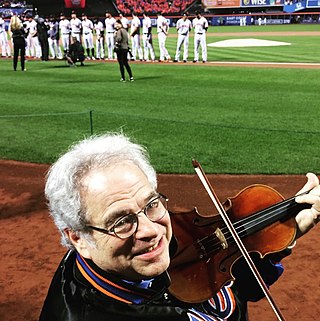
Itzhak Perlman is an Israeli-American violinist. He has performed worldwide and throughout the United States, in venues that have included a state dinner for Elizabeth II at the White House in 2007, and at the 2009 inauguration of Barack Obama. He has conducted the Detroit Symphony Orchestra, the Philadelphia Orchestra, and the Westchester Philharmonic. In 2015, he was awarded the Presidential Medal of Freedom. Perlman has won 16 Grammy Awards, including a Grammy Lifetime Achievement Award, and four Emmy Awards.

The Violin Concerto in D major, Op. 61, was written by Ludwig van Beethoven in 1806. Its first performance by Franz Clement was unsuccessful and for some decades the work languished in obscurity, until revived in 1844 by the then 12-year-old violinist Joseph Joachim with the orchestra of the London Philharmonic Society conducted by Felix Mendelssohn. Joachim would later claim it to be the "greatest" German violin concerto. Since then it has become one of the best-known and regularly performed violin concertos.

Leopold von Auer was a Hungarian violinist, academic, conductor, composer, and instructor. Many of his students went on to become prominent concert performers and teachers.
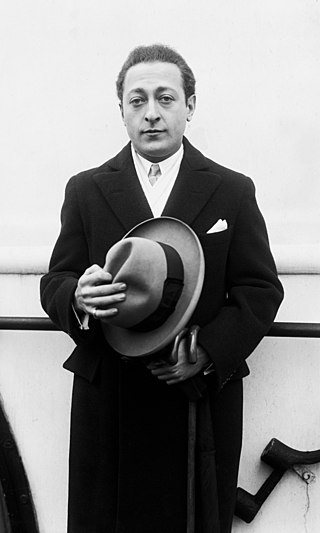
Jascha Heifetz was a Jewish-Russian-American violinist, widely regarded as one of the greatest violinists of all time. Born in Vilnius, he was soon recognized as a child prodigy and was trained in the Russian classical violin style in St. Petersburg. Accompanying his parents to escape the violence of the Russian Revolution, he moved to the United States as a teenager, where his Carnegie Hall debut was rapturously received. Fritz Kreisler, another leading violinist of the twentieth century, said after hearing Heifetz's debut, "We might as well take our fiddles and break them across our knees."

Pablo Martín Melitón de Sarasate y Navascués, commonly known as Pablo de Sarasate, was a Spanish (Navarrese) violinist, composer and conductor of the Romantic period. His best known works include Zigeunerweisen, the Spanish Dances, and the Carmen Fantasy.
Islamey: Oriental Fantasy, is a composition for piano by Russian composer Mily Balakirev written in 1869. Harold C. Schonberg noted that Islamey was "at one time…considered the most difficult of all piano pieces and is still one of the knucklebusters." Its difficulty has led to the creation of numerous ossias and made it popular as a virtuosic showpiece.

Miklós Rózsa was a Hungarian-American composer trained in Germany (1925–1931) and active in France (1931–1935), the United Kingdom (1935–1940), and the United States (1940–1995), with extensive sojourns in Italy from 1953 onward. Best known for his nearly one hundred film scores, he nevertheless maintained a steadfast allegiance to absolute concert music throughout what he called his "double life".
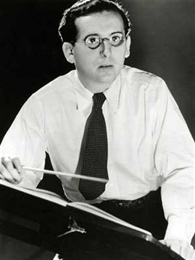
Franz Waxman was a German-born composer and conductor of Jewish descent, known primarily for his work in the film music genre. His film scores include Bride of Frankenstein, Rebecca, Sunset Boulevard, A Place in the Sun, Stalag 17, Rear Window, Peyton Place, The Nun's Story, and Taras Bulba. He received twelve Academy Award nominations, and won two Oscars in consecutive years. He also received a Golden Globe Award for the former film. Bernard Herrmann said that the score for Taras Bulba was "the score of a lifetime."
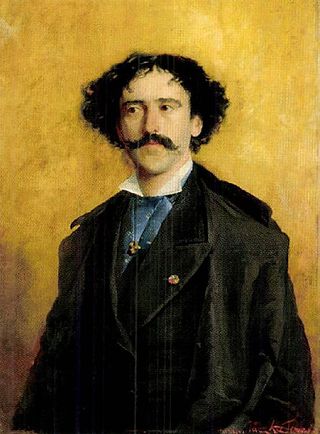
The Carmen Fantasy, Op. 25, by Pablo de Sarasate is a fantasy on themes from Bizet's Carmen for violin and piano or orchestra, composed in 1881. A version with piano accompaniment was published in 1882. It was dedicated to Joseph Hellmesberger.

Earl Wild was an American pianist known for his transcriptions of jazz and classical music.

The Scottish Fantasy in E-flat major, Op. 46, is a composition for violin and orchestra by Max Bruch. Completed in 1880, it was dedicated to the virtuoso violinist Pablo de Sarasate.
The Introduction and Rondo Capriccioso in A minor, Op. 28, is a composition for violin and orchestra written in 1863 by Camille Saint-Saëns. It was dedicated to the virtuoso violinist Pablo de Sarasate, who performed the solo violin part at the premiere in April 1867.
Erich Wolfgang Korngold composed his Violin Concerto in D major, Op. 35, in 1945.
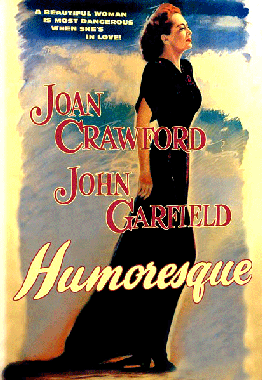
Humoresque is a 1946 American melodrama film by Warner Bros. starring Joan Crawford and John Garfield in an older woman/younger man tale about a violinist and his patroness. The screenplay by Clifford Odets and Zachary Gold was based upon the 1919 short story "Humoresque" by Fannie Hurst, which previously was made into a film in 1920. Humoresque was directed by Jean Negulesco and produced by Jerry Wald.
Zigeunerweisen, Op. 20, is a musical composition for violin and orchestra written in 1878 by the Spanish composer Pablo de Sarasate. It was premiered the same year in Leipzig, Germany. Like his contemporaries, Sarasate misidentified Hungarian folk music with the "gypsy music" of the Romani people, and the themes in the piece are not of Romani origin, but were all actually adapted from Hungarian music pieces: for instance, the third section borrows a melody by Hungarian composer Elemér Szentirmay (1836–1908), and the last section uses a theme from Franz Liszt's Hungarian Rhapsody No. 13, in the rhythm of the csárdás.

The Fantasia in F minor by Franz Schubert, D.940, for piano four hands, is one of Schubert's most important works for more than one pianist and one of his most important piano works altogether. He composed it in 1828, the last year of his life. A dedication to his former pupil Caroline Esterházy can only be found in the posthumous first edition, not in Schubert's autograph.

The Carmen Suites are two suites of orchestral music drawn from the music of Georges Bizet's 1875 opera Carmen and compiled posthumously by his friend Ernest Guiraud. They adhere very closely to Bizet's orchestration. However the order of the musical allusions are in reversed chronological order, and do not adhere to the operatic versions entirely, although the Suite is directly inspired by Bizet's opera.
From March 1816 to August 1817, Franz Schubert composed four violin sonatas. All four were published after the composer's death: the first three, D 384, 385 and 408, as Sonatinas in 1836, and the last one, D 574, as Duo in 1851. Schubert composed two more pieces for violin and piano, in October 1826 and December 1827 respectively: a Rondo, D 895, which was published during the composer's lifetime (Op. 70), and a Fantasy, D 934, which was premiered in January 1828, less than a year before the composer's death.
Franz Schubert composed his Fantasy in C major for violin and piano, Op. posth. 159, D 934, in December 1827. It was the last of his compositions for violin and piano, and was premiered in January 1828 by the violinist Josef Slavik and the pianist Carl Maria von Bocklet at the Landhaussaal in Vienna.
References
- ↑ David Neumeyer; Nathan Platte (6 December 2011). Franz Waxman's Rebecca: A Film Score Guide. Scarecrow Press. pp. 12–. ISBN 978-0-8108-8366-6.
- 1 2 3 "Carmen Fantasie program notes", franzwaxman.com, accessed 3 December 2022
- ↑ Cynthia Wilson (2011). Always Something New to Discover: Menahem Pressler and the Beaux Arts Trio. Paragon Publishing. pp. 60–. ISBN 978-1-908341-25-9.
- ↑ "Franz Waxman (Concert)", Themes & Variations, tnv.net, accessed 3 December 2022 [ failed verification ]